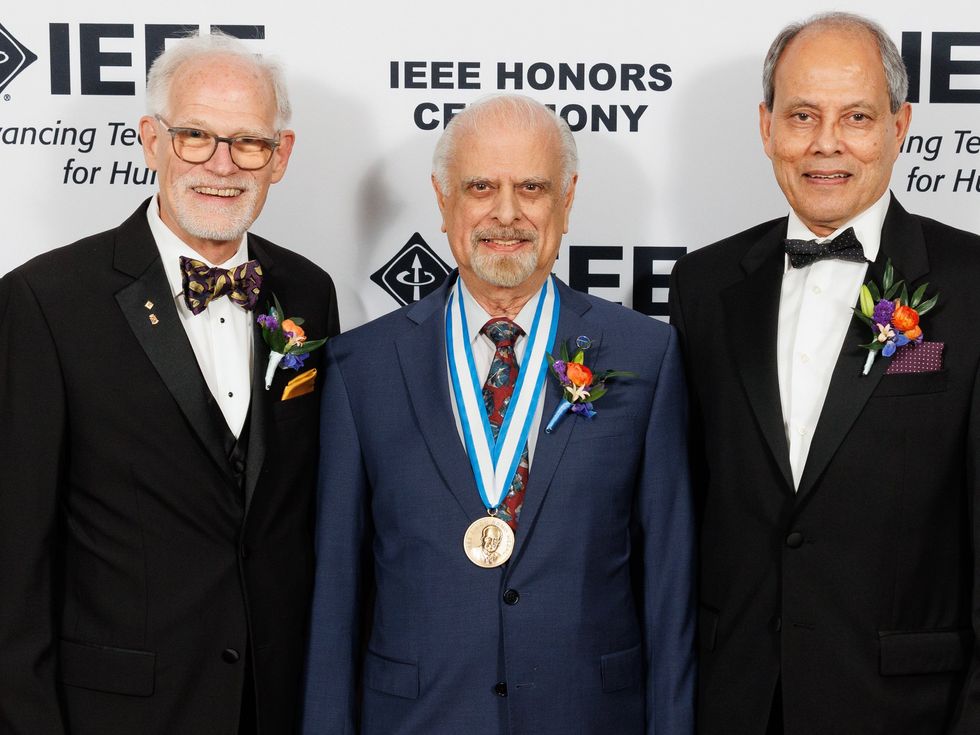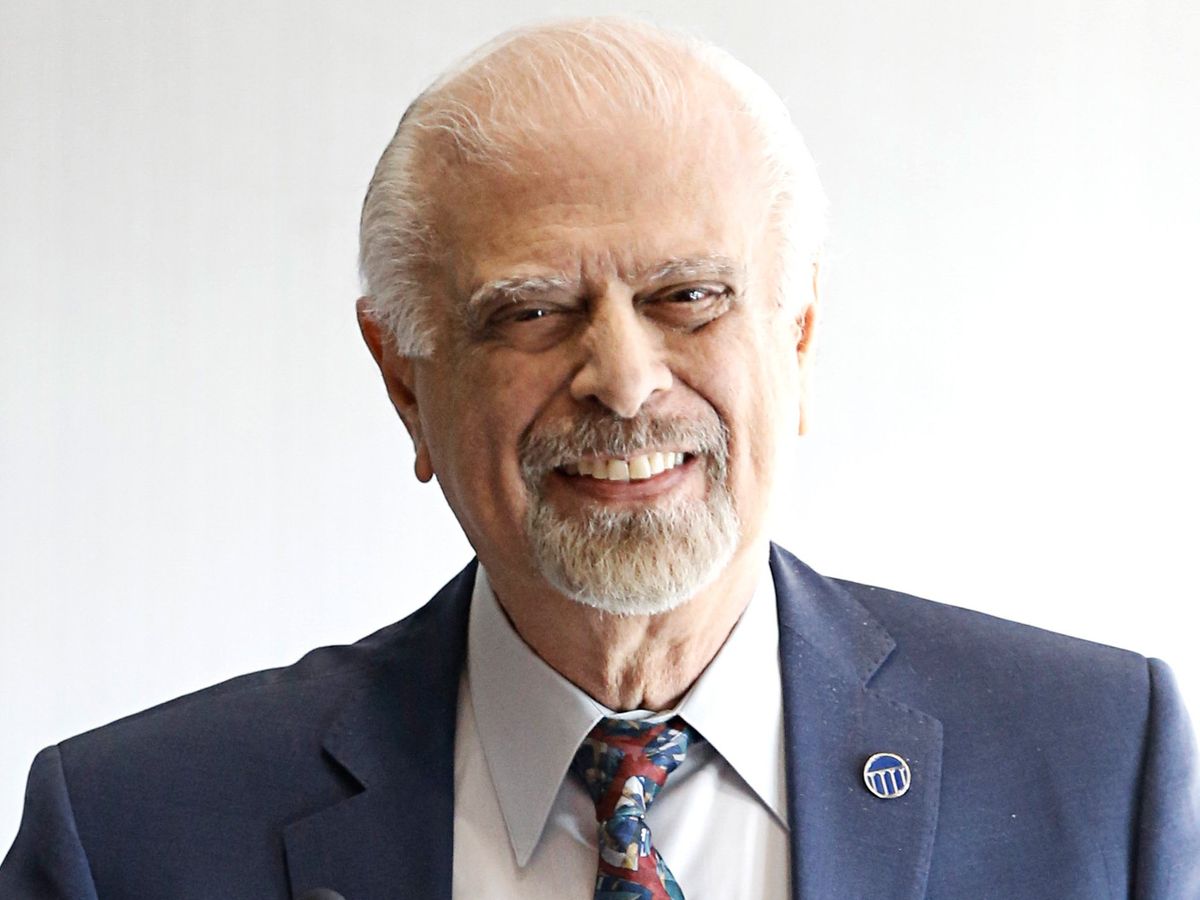Azad M. Madni spent some 40 years working on artificial intelligence and simulation technologies that allowed U.S. soldiers to safely train for combat operations in virtual worlds. Now Madni—a professor of astronautics, aerospace, and mechanical engineering at the University of Southern California—is working to transform engineering education. But he hasn’t abandoned the world of simulation.
Azad Madni
Employer
University of Southern California, in Los Angeles
Title
Professor of astronautics, aerospace, and mechanical engineering
Member grade
IEEE Life Fellow
Alma Mater
University of California, Los Angeles
In 2013 the IEEE Life Fellow created the Transdisciplinary Systems Engineering Education (TRASEE) paradigm, in which professors use simulation software to teach topics through storytelling and role-playing techniques, allowing students to apply their engineering lessons to real-world situations.
For that and other “pioneering contributions to model-based systems engineering, education, and industrial impact using interdisciplinary approaches,” Madni received this year’s IEEE Simon Ramo Medal.
Ramo was a leader in microwave research who headed the development of General Electric’s electron microscope. Ramo served as a presidential chair and professor of electrical engineering at USC’s Viterbi School of Engineering from 2008 until he died in 2016.
Madni says the award is “the crowning achievement” of his career as a systems engineer. It’s particularly special to him, he says, because he and Ramo were colleagues at USC.
From NASA to teaching at USC
Madni, who grew up in Mumbai, became captivated by the U.S. space program after listening to the 1962 “We choose to go to the moon” speech delivered by John F. Kennedy at Rice University, in Houston. The president’s speech was designed to bolster public support for his proposal to land a man on the moon before 1970.
Madni, who knew he wanted to become an engineer, decided he wanted to be part of the “space adventure,” he says.
He moved to the United States to pursue a bachelor’s degree in engineering at the University of California, Los Angeles. Finding himself drawn to systems engineering after taking a UCLA class in the field, he decided to merge his new interest with his passion for space.
After graduating in 1968, Madni joined Parsons Corp. in Los Angeles as a full-time systems engineer and analyst working on defense programs. At night, he took graduate courses at UCLA, and in 1971 he earned his master’s degree in engineering.
He went on to pursue a Ph.D. while also working full-time at Rockwell International’s space division in Downey, Calif., as a simulation systems engineer.
At the time, the company was the prime contractor for NASA’s space shuttle program. Working on the program was a dream come true, he says.
He developed a model-based analysis program to virtually test the performance of the shuttle’s navigation system. He also led the creation of a simulation program that analyzed the navigation system’s performance under different high-stress conditions. Madni’s model-based approach reduced the need for extensive hardware-in-the-loop testing and consequently reduced costs, he says.
After receiving his Ph.D. in 1978 in engineering systems with a concentration in computer methodology and AI, he joined Perceptronics in Woodland Hills, Calif., as director of artificial intelligence and software research, eventually rising to executive vice president and chief technology officer.
“IEEE is the premier engineering society.”
In 1980 he began working on a distributed simulation technology for the U.S. Army. He led a team that was designing a program to train soldiers and allow them to complete practice missions in safe, virtual environments. The Defense Advanced Research Projects Agency (DARPA) and the Army sponsored the work.
At the time, the training simulators used were expensive to build, underutilized, and inflexible.
Madni says he had two goals for the new simulation system: to lower costs, increase utilization, and allow military personnel to modify the scenarios as needed. The technology he and his team developed did just that.
He later returned to the simulation effort, this time focused on enhancing it with immersive story-telling techniques. The project was funded by the U.S. Air Force, Army, Navy, DARPA, and the U.S. Department of Energy as well as several aerospace and automotive companies.
Madni modeled the simulations after video games and movies, engaging multiple senses to create more immersive experiences for users.
Today the Army uses the two systems, called the “game-based training simulations for part-task training” and the “VR-enabled distributed simulation system for collective training.”
Madni left Perceptronics in 1994 to help found Intelligent Systems Technology, an R&D company in Los Angeles that specializes in modeling and simulation technology. He served as the startup’s CEO and CTO until 2009, when he joined the USC faculty as head of the interdisciplinary systems architecting and engineering master’s degree program. Madni is the founding director of USC’s Distributed Autonomy and Intelligent Systems Laboratory, which conducts research in augmented intelligence, autonomous systems, cyber-physical-human-systems, and transdisciplinary systems engineering.
“My father had a passion for education and instilled that same passion in me from a very young age,” he says. “His dream for me was to someday be a faculty member at a prestigious U.S. university. By joining USC, I have fulfilled his dream and have contributed to transforming engineering education for 21st century engineering challenges.”

Teaching systems engineering through storytelling
It was at USC that Madni developed TRASEE.
Instead of a typical lecture format, students start with a short scenario and a technical problem to solve. Each member of a group is assigned a role. The teams use a digital twin—a virtual model—of a machine relevant to the story to assess how well their efforts are succeeding.
Madni says the approach helps students pick up information faster, gain leadership skills, and learn to work with others outside their discipline and from other cultures.
“By taking abstract engineering concepts and embedding them in stories, I’m able to communicate the ideas to students much more clearly,” he says.
According to a 2018 study, students who learn through role-playing exercises score 45 percent higher on tests than those taught through traditional lectures.
Madni has been recognized by several organizations for creating TRASEE. This year he received the National Academy of Engineering’s Gordon Prize for Innovation in Engineering and Technology Education. The prize includes a US $500,000 award; Madni donated half of the money to the NAE and half to USC.
Networking with engineers from different disciplines
Madni has been an IEEE member for 46 years. Since 1980 he has held several leadership positions and has presented papers at IEEE conferences worldwide.
In 2013, he cofounded the IEEE Systems, Man, and Cybernetics Society’s technical committee on model-based systems engineering and serves as its chair. The committee creates educational resources, and members are involved in standardization efforts. Members also hosted panel sessions at the 2023 International Conference on Systems Engineering Research and presented research papers. As chair, Madni has led several collaborative efforts with professional engineering societies including International Council on Systems Engineering and the Institute of Industrial and Systems Engineers.
Madni is also an active volunteer with the IEEE Aerospace and Electronic Systems Society, the IEEE Computer Society, IEEE-USA, and the IEEE Systems Council.
“IEEE is the premier engineering society,” he says. “It goes well beyond electronics and electrical engineering. It encompasses many disciplines including biomedical engineering, control systems engineering, cybernetics, systems engineering, and engineering management.
“IEEE being multidisciplinary makes it an ideal forum for networking with engineers from different disciplines.”
Madni says he enjoys mentoring aspiring engineering students and young professionals working in both academia and industry. He says this is his way of giving back and he enjoys helping them to “realize and live their dream as I did.”Joanna Goodrich is the associate editor of The Institute, covering the work and accomplishments of IEEE members and IEEE and technology-related events. She has a master's degree in health communications from Rutgers University, in New Brunswick, N.J.



